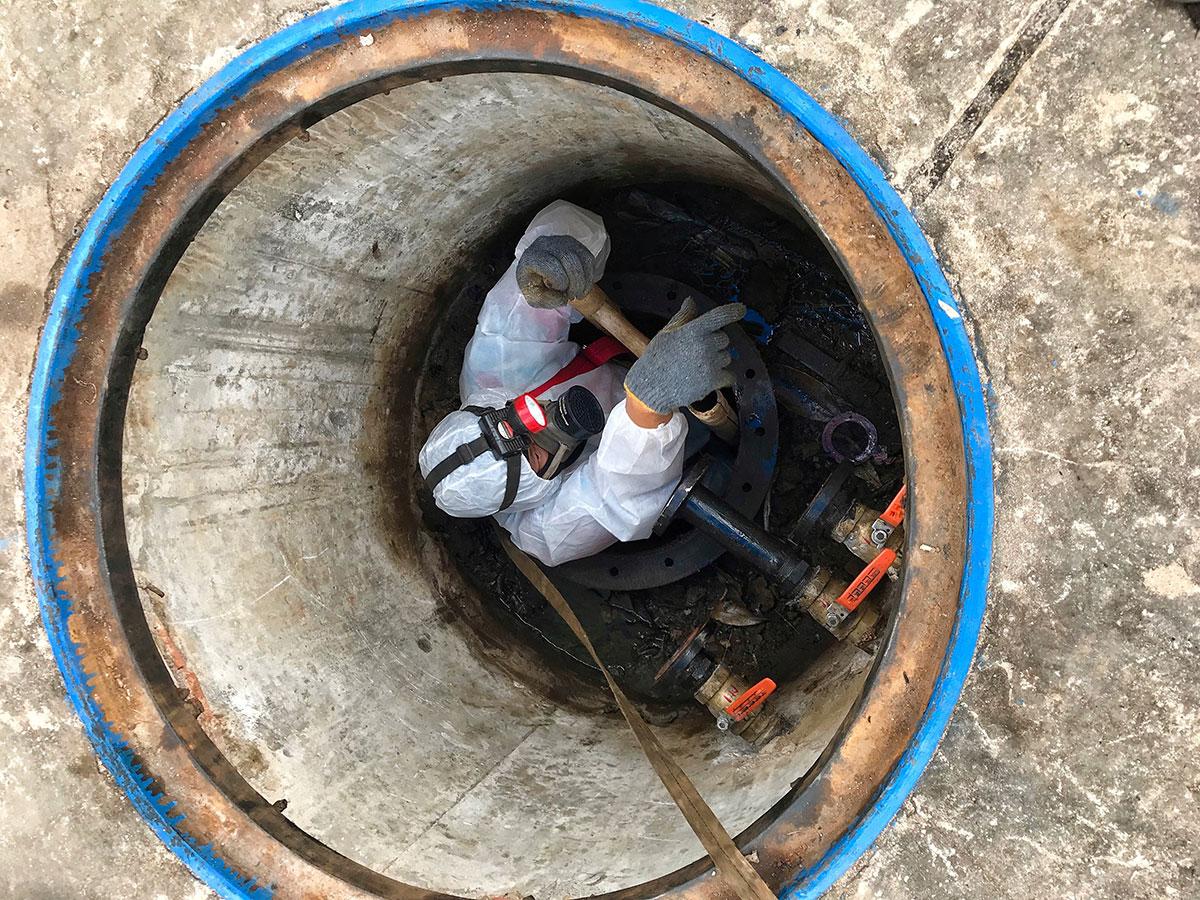Confined Space Entry
Many industrial workplaces occasionally require confined space entry of their workers. Although confined spaces by definition are not intended for continuous employee occupancy, it is important that those employees who work in confined spaces and all that manage them are aware of how to safely engage in activities in these areas. Clean Management offers OSHA-compliant confined space entry training to protect your company’s most valuable assets.

What is a confined space?
OSHA defines a confined space as an area that has adequate space for a person to enter and work, has limited means of entry and/or exit, and is not intended for continuous occupancy. Some examples of confined spaces include pipelines, underground vaults, and silos.
Some confined spaces require a permit. In addition to the base definition of a confined space, permit spaces also have at least one of the following characteristics:
- Has or has the potential to have a hazardous atmosphere
- Contains a substance that may engulf the entrant
- Has walls that converge or floors that slope in such a way that they may trap or asphyxiate the worker
- Contains some other known safety hazard, like exposed live wires or heat stress
Although the National Safety Council (NSC) notes that confined space incidents in industrial settings are not the most common workplace issues, they can have the highest fatality rate due to their tendency to be underestimated. Incidents with confined spaces often involve both the worker and the rescuer. For these reasons, proper and timely training cannot be emphasized enough.
Confined Space Entry Training
Confined space entry training is intended for employees who work in the construction and general industry segments, which includes those in manufacturing, oil and gas, utilities, and petrochemicals. Emergency personnel in all industries may also be included.
Clean Management’s OSHA-compliant training course covers everything from identifying permit-required confined spaces (PRCS) to emergency response protocol. Upon completion of this course, students should understand all relevant OSHA regulations, be able to differentiate permit required and non-permit required confined spaces, know the responsibilities of confined space entrants and supervisors, and comprehend the limitations and uses for related equipment.
For more information on the confined space entry training course or to request a free quote for our services, reach out to the local waste management professionals at Clean Management.






